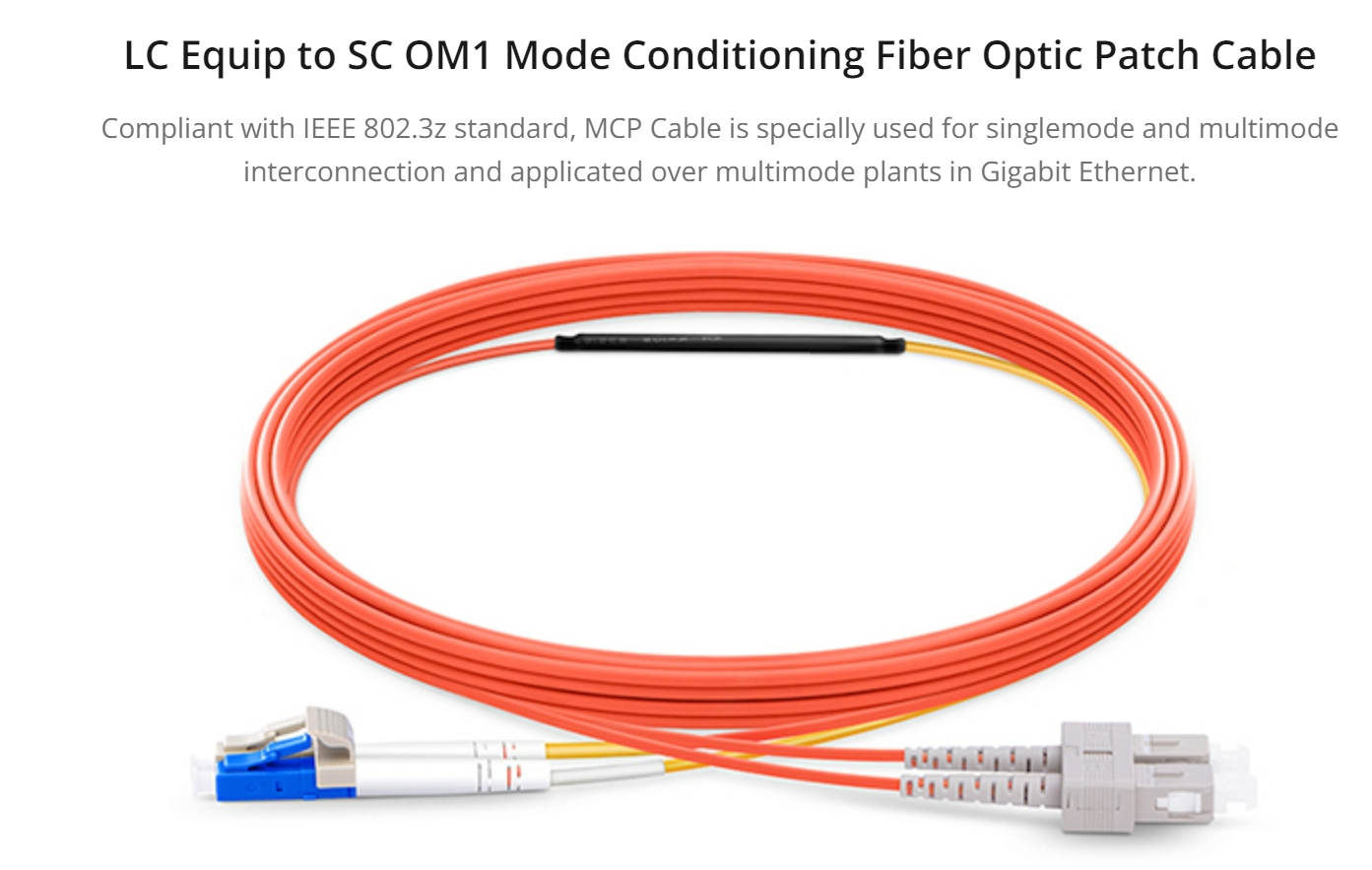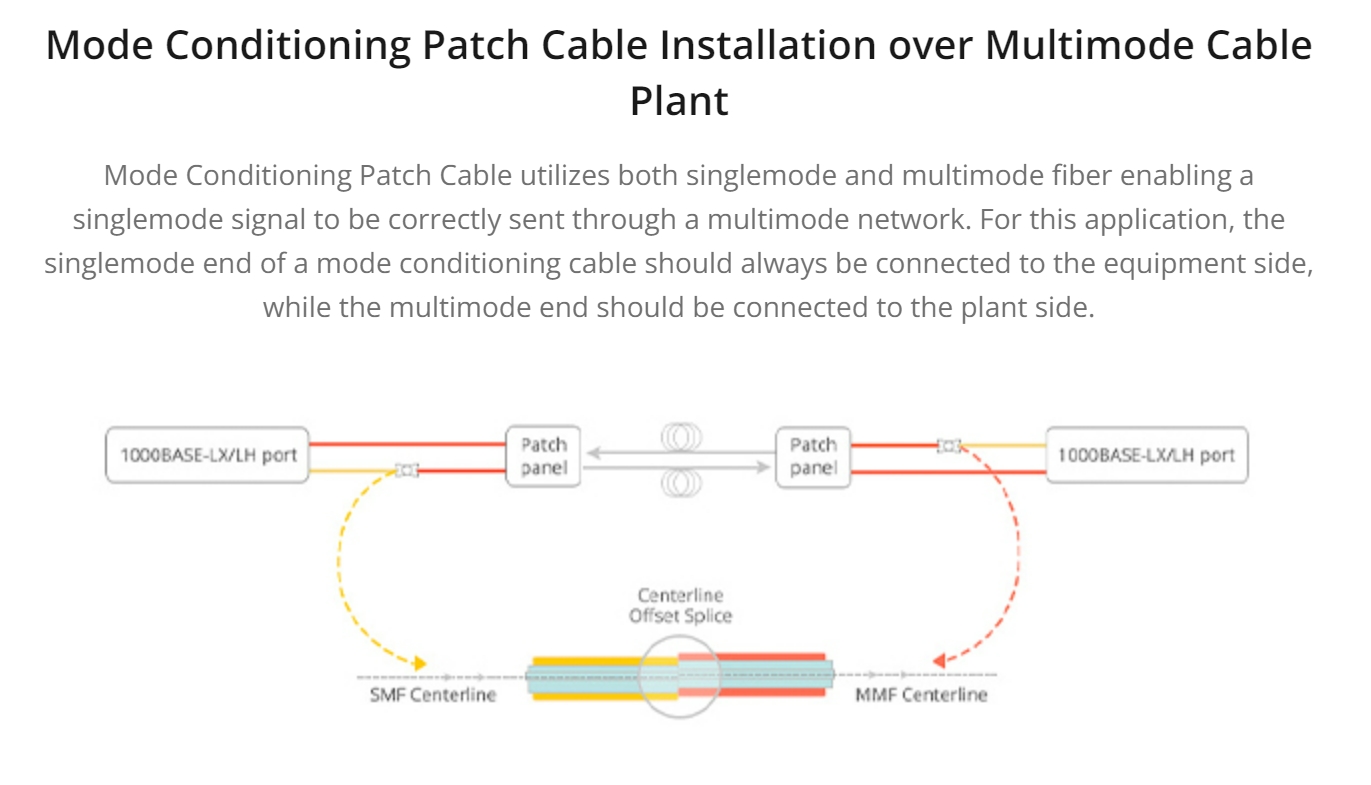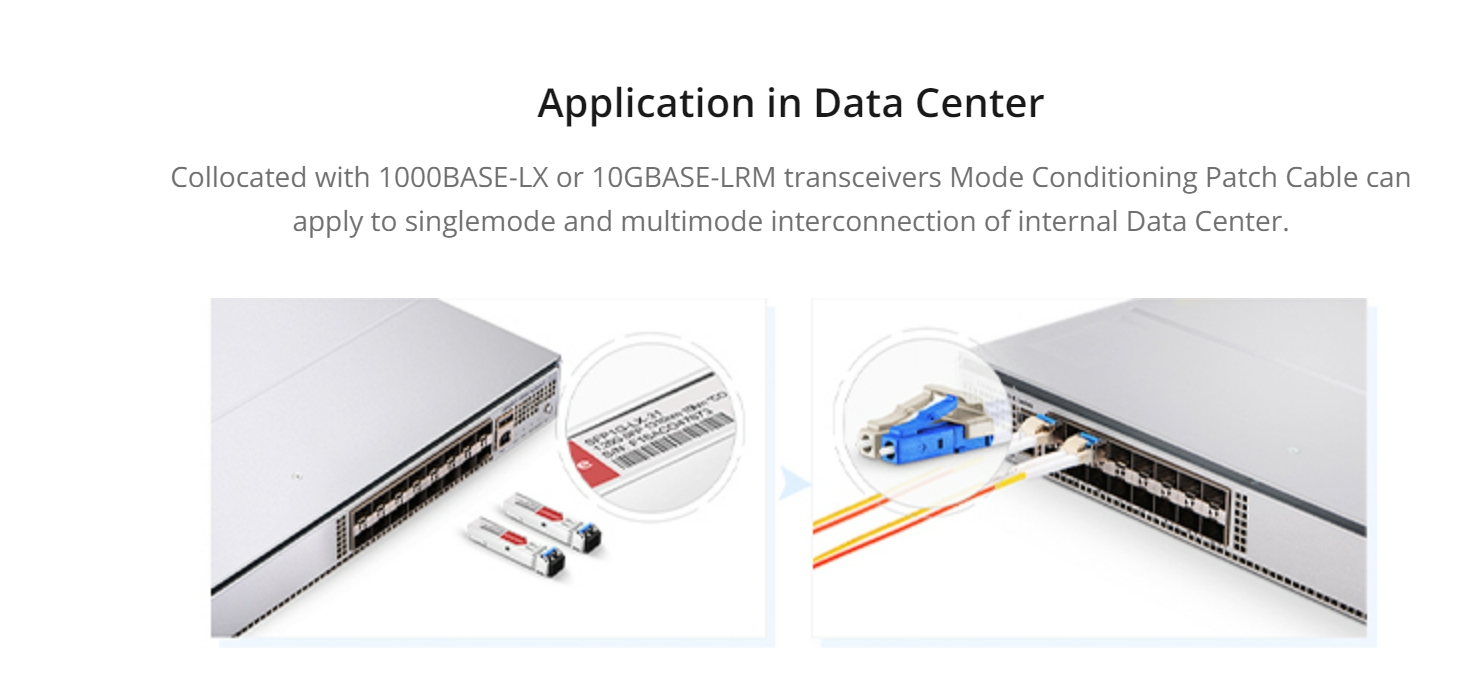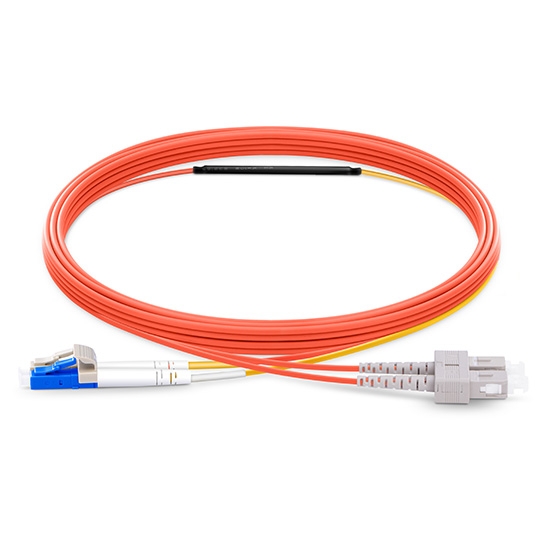LC to SC OM1 Mode Conditioning PVC (OFNR) Fiber Optic Patch Cable

LC to SC mode conditioning patch cable is a specialized type of fiber optic patch cable designed to connect equipment with different fiber types and operating modes. In this specific case, it is used to bridge the gap between single-mode (SM) fiber with a core size of 9/125μm and multimode (OM1) fiber with a core size of 62.5/125μm. This type of patch cable is commonly used in data centers,

telecommunications networks, and enterprise networks to facilitate the seamless transmission of data across different types of fiber optic cabling systems.The LC to SC mode conditioning patch cable supports the transmission of data between single-mode and multimode fibers by incorporating mode conditioning features. Mode conditioning is essential for ensuring the integrity and performance of the optical signal when transitioning between different fiber types. In the case of this patch cable, it helps alleviate the effects of differential mode delay and modal dispersion that can occur when conn ecting single-mode and multimode fibers, especially in high-speed data
ecting single-mode and multimode fibers, especially in high-speed data
transmission applications.The LC and SC connectors at each end of the patch cable provide compatibility with a wide range of networking equipment and infrastructure. The LC connector, known for its small form factor and high-density design, allows for efficient use of space in patch panels and networking devices. The SC connector, featuring a push-pull coupling mechanism, ensures secure and reliable connections. This combination of connectors enables the patch cable to seamlessly link devices that utilize LC and SC connectors, providing flexibility and connectivity options in various networking scenarios.The construction of the patch cable includes single-mode and multimode fibers coupled with a mode conditioning unit, typically in the form of a specialized offset splice. This unit ensures that the

optical signal is properly conditioned to minimize the impact of modal dispersion and differential mode delay during transmission. The use of high-quality materials and precision manufacturing processes further enhances the cable's performance and reliability, making it suitable for demanding networking environments.The LC to SC mode conditioning patch cable enables network administrators to optimize the performance of their fiber optic networks by providing a seamless and reliable connection between equipment operating on different fiber modes. Its ability to support single-mode and multimode fibers with mode conditioning ensures that the optical signals are effectively conditioned for smooth and efficient data transmission.In conclusion, the LC to SC mode conditioning patch cable is an

essential component in fiber optic network installations where different fiber types and operating modes need to be interconnected. Its mode conditioning features, combined with the compatibility of the LC and SC connectors, make it a valuable solution for ensuring reliable and high-performance data transmission across diverse fiber optic infrastructure. With its robust construction and precise engineering, this type of patch cable offers network administrators a versatile and effective tool for addressing connectivity challenges and optimizing the performance of their fiber optic networks.







